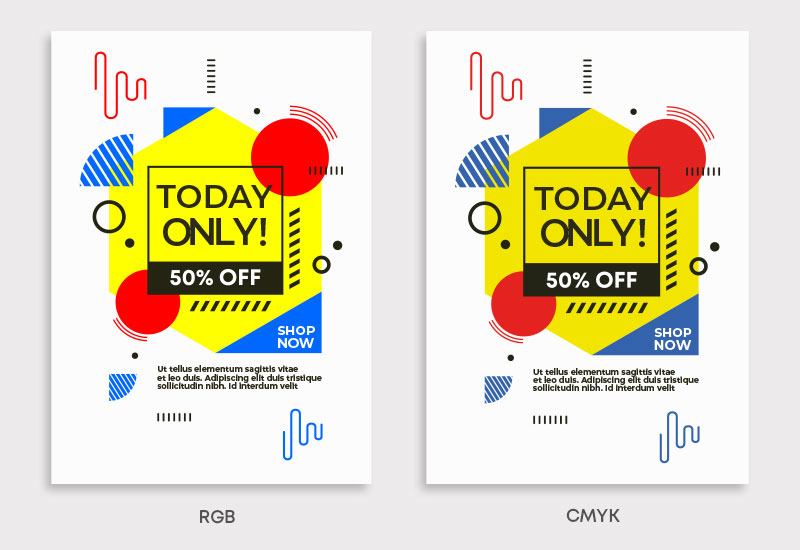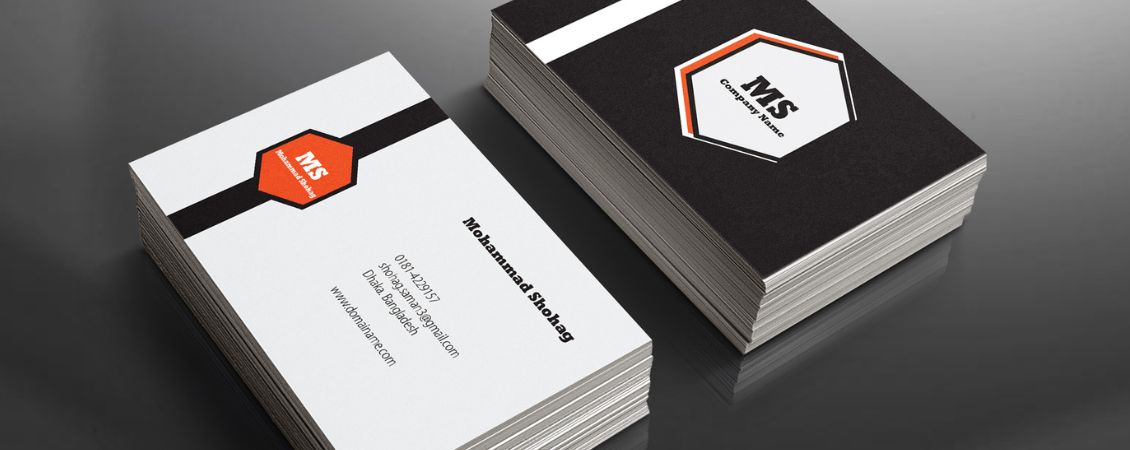If you're designing artwork for print, one of the first things you should check is the colour mode. RGB and CMYK are two different ways of displaying colour, and using the wrong one can lead to disappointing results.
Here's what you need to know.
| Feature | RGB | CMYK |
|---|---|---|
| Stands for | Red, Green, Blue | Cyan, Magenta, Yellow, Black |
| Used for | Digital screens | Printed materials |
| Colour method | Additive (light-based) | Subtractive (ink-based) |
| Colour range | Wider | More limited |
| Examples | Websites, social media graphics | Flyers, business cards, posters |
What is RGB?
RGB stands for Red, Green and Blue.
It's the colour mode used for digital screens like laptops, phones and TVs.
Screens work by shining red, green and blue light at different intensities. When these colours mix together, they create white. When no light is shown, you get black. RGB is called an additive colour model because it works by adding light.
RGB can display a wide range of bright, vibrant colours, which is great for digital use. But printers can’t replicate every RGB colour, which is where CMYK comes in.
What is CMYK?
CMYK stands for Cyan, Magenta, Yellow and Key (black).
This is the colour mode used for printing. Instead of mixing light, it mixes ink. It’s known as a subtractive model because it subtracts brightness from white paper using layers of ink.
When you print, tiny dots of each ink are laid on top of one another. Combining all three main colours gives you a murky brown, so black is added separately to get deep, true blacks.
CMYK is more limited than RGB in terms of colour range. That’s why bright neon colours or vivid blues sometimes look duller when printed than they did on your screen.
Why the Colour Mode Matters
If you send us a file that’s set up in RGB, the colours might look different when it’s printed. That’s because the colours have to be converted to CMYK before they go to print.
At instantprint, we make this process as easy as possible:
- Our online proofing tool automatically converts colours to CMYK, so you can preview how your artwork will look in print
- Our in-house studio team checks every file before printing to make sure it's set up correctly
Even with this safety net, we recommend designing in CMYK from the start if you're creating something specifically for print. This gives you more control over how your colours turn out.

When to Use Each Colour Mode
Use RGB for:
- Website graphics
- Social media images
- App and screen-based designs
- Digital ads and presentations
Use CMYK for:
- Flyers, leaflets and brochures
- Business cards and stationery
- Posters and banners
- Packaging and labels
- Anything you plan to print
How to Check and Convert Colour Modes
If you're using design software like Adobe Photoshop, Illustrator or InDesign, you can check your colour mode under the settings. Most programmes also let you convert from RGB to CMYK with just a few clicks.
Remember that when you convert from RGB to CMYK, you might see some colour shifts. If you need help adjusting your artwork, our team is here to help.
If you'd like to learn more, check out our colour guide for artwork.
Final Tip
Always export your print files in CMYK colour mode where possible. If you're not sure how, don’t worry.
We’ll check it for you before anything goes to print and our proofing tool will flag any issues.




